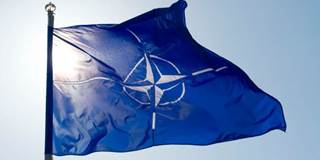NATO may be good at deterring a conventional attack against its member countries, but, nowadays, conventional attacks are not what countries on its southern flank are worried about. This week’s NATO summit in Warsaw will amount to a litmus test of the Alliance’s ability to adapt to a new, more complex security landscape.
ISTANBUL – For almost seven decades, NATO has amply demonstrated its ability to fulfill its core mission of deterring a conventional attack against its member countries. But the threat landscape on NATO’s southern flank is changing, pushing the Alliance toward uncharted waters. This week’s NATO summit in Warsaw will amount to a litmus test of the Alliance’s ability to adapt to the new more complex security challenges that it faces.
Since the Cold War, when it was positioned as a bulwark against Soviet expansionism, NATO has proved adept at developing responses to conventional threats posed by state actors. When the threat of ballistic missiles from Iran became potent, it built a missile-defense architecture to deter provocation. When a resurgent Russia began to generate concerns among the Alliance’s eastern members, it revised its forward posture to reassure them.
NATO’s approach to non-state actors, however, is less well developed. Indeed, no such approach really existed until the September 11, 2001, terror attacks on the United States, when the notion that terrorist groups could pose a real threat to the West’s security penetrated official thinking for the first time. That moment became a turning point for NATO, not only because it spurred the first invocation of the collective-defense clause, Article 5, but also because the clause was invoked against an amorphous non-state entity in the mountains of Afghanistan.

ISTANBUL – For almost seven decades, NATO has amply demonstrated its ability to fulfill its core mission of deterring a conventional attack against its member countries. But the threat landscape on NATO’s southern flank is changing, pushing the Alliance toward uncharted waters. This week’s NATO summit in Warsaw will amount to a litmus test of the Alliance’s ability to adapt to the new more complex security challenges that it faces.
Since the Cold War, when it was positioned as a bulwark against Soviet expansionism, NATO has proved adept at developing responses to conventional threats posed by state actors. When the threat of ballistic missiles from Iran became potent, it built a missile-defense architecture to deter provocation. When a resurgent Russia began to generate concerns among the Alliance’s eastern members, it revised its forward posture to reassure them.
NATO’s approach to non-state actors, however, is less well developed. Indeed, no such approach really existed until the September 11, 2001, terror attacks on the United States, when the notion that terrorist groups could pose a real threat to the West’s security penetrated official thinking for the first time. That moment became a turning point for NATO, not only because it spurred the first invocation of the collective-defense clause, Article 5, but also because the clause was invoked against an amorphous non-state entity in the mountains of Afghanistan.